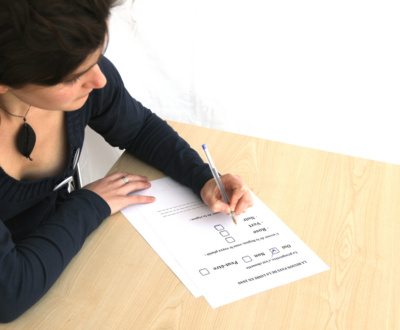Everything about effectively targeting online ads can be boiled down to a single concept: Look at the world as if you are your target customer. You may think that you’ve done this, but if your online ad campaign isn’t performing well then there’s still room for improvement.
Here’s the ultimate test of how well you know your audience, do you think you could make decisions for them, and not just about your product? If you were given a list of restaurants, do you know where you target audience would most likely choose to eat? If you had a choice of books to read, do you know which one your target customer would pick? If you were given a time of day, could you look at the TV listings and identify which show your target customer would be watching?
Until you know your customer well enough that you could make decisions for them, you can still get to know them better.
You may be saying that TV shows or books or restaurants have nothing to do with your business, and that’s exactly the point. The same psychology, preferences, tastes and desires that influence the choices your potential customers make about what shows to watch and where to eat also impact their choice to purchase from you, a competitor, or not to purchase at all. Without knowing about these aspects of your customers, your understanding will remain incomplete.
So, how do you achieve this level of understanding? There are a few ways. You could simply look at the characteristics of all of your customers and try to find patterns. You can ask yourself: What do my best customers have in common? Is it an age group? A gender? A specific set of websites that referred them to me? After finding the common threads of your existing customers, read more about where you can find groups of people that are like your best customers and target your ads there.
While targeting your ads with research is better than going with your impulses, an even more effective way to really get inside your customer’s heads is with surveys. The most effective surveys are actually ones that ask 3-5 open-ended questions. Anything longer and it becomes a burden to fill out, but you want to use open-ended questions so that your customers reply in their own words. This way, you can identify the common phrases that they use. Finding these common words is like gold to a marketer, because then you can speak to your customers in the exact words they use to describe their problems to themselves.
After you’ve researched, and hopefully surveyed, your customers to find out where they spend time online and how they describe their problems in their own words, you’re ready to set up your online ad campaign. You’ll know exactly what sites, apps, and other online tools your customers spend the most time on, and you can begin looking at the options for advertising those places.
The key thing to balance when purchasing online ads is the percentage of the site’s traffic that fits your target audience versus how much it costs to advertise there. Assuming the costs are the same, running ads on a site with 100,000 monthly visitors that are all in your target audience will get you more impressions than a site with 250,000 visitors if only 25% of them are in your target audience. The key to that though is “assuming the costs are the same.”
When setting up your ads, try to determine not just the cost per impression, but also the cost per target impression. To figure this out, simply multiply the percentage of site traffic in your target audience by 1,000 (or whatever unit you buy your impressions in), and then take the cost and divide it by that number. For Site A below it would be 25% * 1,000 = 250. $5.00/250=$0.02.
|
Site |
Cost Per 1,000 Impressions | % Traffic in Target Audience | Cost per Target Impression |
| Site A | $5.00 | 25% | $0.02 |
| Site B | $20.00 | 75% | $0.0267 |
In the example above, you’ll see that Site A is actually a better deal, even though there are fewer people in the target audience. It costs you less to reach those people because the total cost is also so low. This may seem like a waste, since 75% of the people seeing your ads are not in your target audience, but in this case it’s okay to waste those impressions because they are so cheap that you still get a good deal reaching your target audience.
This is author biographical info, that can be used to tell more about you, your iterests, background and experience. You can change it on Admin > Users > Your Profile > Biographical Info page."
About us and this blog
We are a digital marketing company with a focus on helping our customers achieve great results across several key areas.
Request a free quote
We offer professional SEO services that help websites increase their organic search score drastically in order to compete for the highest rankings even when it comes to highly competitive keywords.
Subscribe to our newsletter!
More from our blog
See all postsRecent Posts
- 4 Reasons You Should Be A/B Testing Your Email Marketing Campaigns May 15, 2018
- The Secret Strategy for Using Surveys to Boost Conversions (It’s Not What You Think) February 2, 2017
- Advanced Brand Positioning Strategies December 31, 2016




